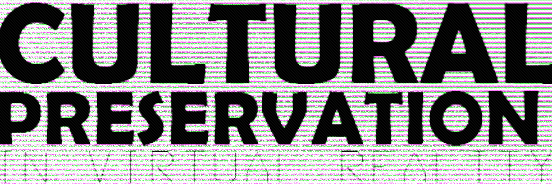I came into this semester with high interest of but very little knowledge about virtual reality. Thus, it was my personal aspiration to explore the various resources that are available both on and offline to learn about the intricate processes that goes into making Virtual Reality (VR) experiences. In addition to utilizing the concept of “play” to explore and learn about programming as it relates to virtual reality, my research during the course of the semester was focused on finding new methodologies to expand cultural preservation in VR environments. The general question I investigated was “How Does VR Impact Being Human and the “Human Experience?” More specifically, “How can VR be used as medium to holistically preserve cultural heritage?”
Several research approaches and methodologies have been previously used in an attempt to preserve cultural heritage in virtual reality. While most of these methodologies seems to be successful, they typically are recreation of tangible objects and heritage sites from the original to 3D renditions in virtual spaces. The British organization DigiArt for example, seeks to provide a new, cost efficient solution to the capture, processing and display of cultural artifacts in virtual reality. Sophisticated technologies such as aerial capture drones, and automatic registration and modelling techniques are used during this process. While this approach makes cultural artifacts more accessible to a larger audience, its effectiveness is still of concern. If cultural preservation only consist of capturing and replicating tangible objects and heritage sites from their original context to VR spaces, we immensely limits different cultural values and the technological affordances of virtual reality.
The future of cultural preservation in virtual reality is the preservation of intangible cultural heritage. In his book, “eCulture: Cultural Content in the Digital Age” Alfredo M. Ronchi describes intangible objects as practices, representations, expressions, knowledge, and skills that communities, groups and, in some cases, individuals recognise as being part of their cultural heritage. While tangible objects (built heritage, monuments and archaeological sites, paintings, sculptures, etc) can be captured and replicated in virtual reality, it is much more difficult to capture and preserve the practices and expressions of cultures in virtual reality using conventional methodologies. In other to achieve success in preserving intangible cultural heritage holistically in VR, our approach and methodologies should be substantially different than that of the preservation of tangible objects. How this can be done, was the primary focus of my research this semester.
The process of preparing a meal, for example, is an idiosyncratic practice that differs from one culture to the next. After my visit to Liberia over spring break, I became interested in abstracting aspects of the Liberian cooking experience and creating a virtual reality environment where one could learn about its process in an immersive space. My focus wasn’t necessarily recreating the tangible objects that would be use to create a Liberian dish, but instead the thought process that went into preparing a meal based upon the context of the environment. Most of my time working on this project was spent learning the fundamentals of coding, specifically for virtual reality. This involved “hacking” and consistent visits to online community boards.
In conclusion, I became more comfortable with coding in the latter phase of the semester. Once I started creating interactions, I was then able to direct my attention to the functionality of my VR application. Over the course of the summer, I plan on continuing my explorations of cultural preservation in virtual reality and pushing the limits of my Liberian cooking experience as I become more knowledgeable of programming.

